Continuing the ongoing series of interviews with creative artists working on various aspects of movie and TV productions, it is my pleasure to welcome Jonathan Benefiel, an actor turned executive producer with a passion for empathy-focused projects. In this interview he talks about the business of visual storytelling, what a producer is, building a reputation in the business, the challenges he sees for the movie exhibition business, and how the industry is evolving.
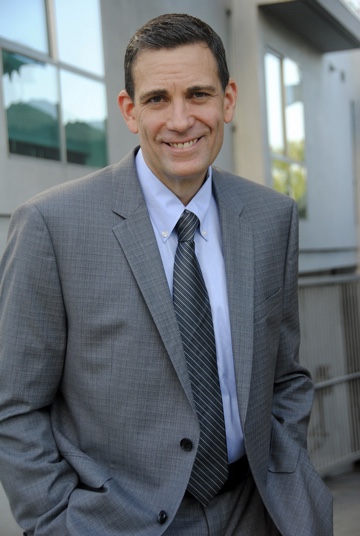 Kirill: Please tell us about yourself and the path that took you to where you are today.
Kirill: Please tell us about yourself and the path that took you to where you are today.
Jonathan: I’m 59 years old and am originally from Brooklyn, NY. My family moved to Staten Island in 1970 and I still live there to this day. I started in this industry at the age of 23, which was a bit late. I wasn’t a happy camper back then. I felt that I needed to find my path and my passion, to feel like I had a purpose other than simply existing just to survive and pay bills. I felt like I needed to find my purpose.
So I had a conversation with my mom at the time and she suggested that I take an acting class. Coming from her, that was very shocking [laughs]. She always talked to me about going to college, having a career and making a living that way, so the last thing I expected her to suggest was for me to take an acting class. But on her advice, I did it. I took a cold reading class with a woman named Sally Johnson in Manhattan, and that’s how it all started for me. Once I started taking classes, I fell in love with it, and I never looked back.
Moving forward in my career, I found that I wasn’t really getting anywhere. I had the agent, I had the headshots, all of the tools that they tell you you need in order to succeed as an actor, but still I was finding that things were not moving in the direction that I wanted it to go. So I moved to Los Angeles in 2006 at the ripe old age of 43 [laughs], but it turned out I was really just doing the same thing I was doing in New York. Nothing had really changed, though I did meet my future wife there, so that was something.
After a while, I started to wonder if there was a different approach that I could use to succeed in the business. So I decided that instead of counting on my agent to get me parts, I took things into my own hands. I asked myself what I could do to further my career where I wouldn’t have to depend on anybody else. A buddy of mine that I’ve known since 1989, Eric Seltzer, had always wanted to play Lennie in “Of Mice And Men”, and he always pictured me playing George opposite him. So I decided to do a short film that I could self-produce, something like “Of Mice And Men” but bring it into the 21st century.
I had an idea to do a story about two brothers that are sort of mafia type guys, not murderers or anything like that, but they work for a boss as the muscle. So I started toying with that idea and we put together a short film called “Protecting Tony” which got 32 awards and another 5 nominations on the festival circuit. And from that exposure we got a sales agent to come on board, and that sales agent ended up getting us on DirecTV’s short channel, as well as Amazon Prime and several other Internet platforms. That was my first short film, and I got a pretty big bang for my buck. The success of that project inspired me to keep going down that path.
When you find something that works, you want to stick with it, and so that’s what I did. Then the documentary “John Leguizamo’s Road to Broadway” came my way through an Indiegogo campaign, and for a certain level of investment they were offering an executive producer credit. Once I realized what the project was about, which was the Latin community’s contribution to our country, and the fact that that important history and contribution was never taught in any schools, at least none that I went to, I instantly felt it was a project I needed to help promote and invest in. So I jumped right in, and that was my first foray into something that had gained more wide spread commercial success than anything I had done previously. It aired on PBS’s “Great Performances” and ended up winning an Imagen award. So that was another opportunity that moved my career forward.
While all this was going on, I was cultivating my Facebook contacts. One day a producer by the name of Cary Anderson friend requested me. I checked him out on IMDB and I saw that we were doing similar kinds of projects, so we connected and would chat on occasion. One day he approached me and asked if I’d be interested in being a co-executive producer on “The Trial of the Chicago 7”. Once I realized what the storyline was about — that Aaron Sorkin wrote it and was attached to direct — as well as the A-list cast along with Steven Spielberg’s Dreamworks Pictures behind it, it was a no-brainer.
A lot of what was taking place in the ’60s during that tumultuous period was playing out in our current politics, and I felt that this was a very urgent story to tell since it seemed our democracy was on the precipice of failing. In fact, I still feel that way. So I thought this was an important story to tell. The only thing that was left to do was basically beg my wife [laughs] to spend a ridiculous amount of money to support the film, and, after much pleading, she finally agreed and the rest is history.
Continue reading »
Continuing the ongoing series of interviews with creative artists working on various aspects of movie and TV productions, it is my pleasure to welcome Amy Bench who recently finished working on three independent films Mama Bears, Shouting Down Midnight, and Lover, Beloved, all of which were featured in the 2022 SXSW Festival. In this interview she talks about the art and craft of cinematography, the transition of the industry from film to digital, the ways people connect to stories, and working on documentaries.
Kirill: Please tell us about yourself and the path that took you to where you are today.
Amy: I always loved images as a child. I loved to make art and take photos when I was young, and after I graduated from school with my engineering degree, I got a job at the film company Eastman Kodak. I worked there for a few years and got a taste of what it was like to work on the technical side. After a while, I decided that I was more drawn to the creative side, so I left that job, but while I was there I learned a lot about imaging science, the technical side of making images on film and digital, and how images are captured on sensors. At that time Kodak was heavily interested in quickly transitioning into the digital space, which was something that they were reluctant to do for a long time – because film is such a money maker as an expendable medium.
So I ended up going to film school at the University of Texas in Austin for filmmaking, and even at that time, I didn’t realize I wanted to be a cinematographer. I always wanted to be behind the camera, and while I was at Kodak, I knew that this is the part that I liked. I like helping to shape the imagery as a tool for storytelling. While I was there, I worked on as many projects as I could, including directing my own films.
Then I moved to New York and worked for Maysles Cinema, a documentary production company started by Albert Maysles and his brother David. I worked for them for a few years, and that was the start of my career. It was a long journey, but once I started working in cinematography, that’s where I stayed.
Kirill: Is there such a thing for you still as the magic of moviegoing experience, or do struggle a bit to separate your enjoyment as a viewer from your knowledge of how it’s done?
Amy: There is a bit of magic, but it’s probably more difficult than your average viewer to get pulled into the story. I am always looking at the lighting and the cinematography to try to see what they might have done to do particular shots. I hate to say it, but it definitely is a different experience now that I work in the industry.
Kirill: Do you think that the debate on film vs digital has been settled? Is there still space to have this debate, or has it been settled by the financial side of it, and by forces outside of the artistic preferences?
Amy: Certainly the financial side was the biggest driver. Once you have your hands on the digital equipment, it’s quite cheap to produce and you’re freer to shoot more than you are with film. With film, you have physical limitations in terms of needing to order enough film stock and having the budget up front, whereas digital is so much more accessible.
I don’t think it’ll ever be settled. It’s the same with acrylic vs oil painting. Some people are still going to choose to use oil paints even though they’re much more expensive and take a lot more time. The medium is dependent on the story as well as the budget. For instance, I take still photos outside of my work as a cinematographer and I shoot on film, and maybe that’s where the magic comes in. I do love the magic of image-making, and there’s something about film that feels more magical to me.
The still camera that I’m using doesn’t have a digital back or anything, and so it’s the magic of getting your film processed and seeing what comes back. You might have a pretty good idea if you’re using a light meter, and you have experience with looking at exposure, but there’s still something about film that is a surprise. It makes the process fun and enjoyable.
I don’t get to do it so much anymore in movie-making. I did shoot film in graduate school because we had access to 35mm and 16mm cameras, and honestly, some of those are still some of my favorite things, especially the 35mm that I shot. There’s just something so intangibly gorgeous about it. Digital has come a long way in the last 10-15 years, and you can do a lot in color grading. Working with film required choosing a film stock that has a certain characteristic, and that gave you a lot of the look right away. With digital, you’re typically shooting flat and you don’t have to commit right away with the approach.
From a financial standpoint, shooting on film may not always make sense, but from an artistic standpoint, it could be the best solution.

Cinematography of “Shouting Down Midnight” by Amy Bench.
Continue reading »
Continuing the ongoing series of interviews with creative artists working on various aspects of movie and TV productions, it is my pleasure to welcome Tamara Deverell. In this interview she talks about the art and craft of production design, the transition of the industry from film to digital, production shifts as more stories are told on streaming platforms, doing research in the digital age, and the impact of the ongoing pandemic on her industry. Around these topics and more, Tamara dives deep into her work on the recently released “Nightmare Alley”.
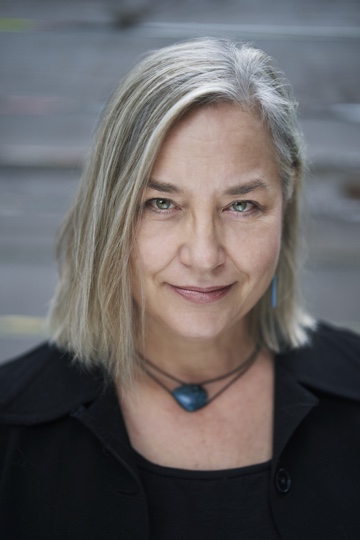 Kirill: Please tell us about yourself and the path that took you to where you are today.
Kirill: Please tell us about yourself and the path that took you to where you are today.
Tamara: I was an art student, studying just about everything I could manage to put my hands on in art school: printmaking to painting to sculpture to photography to filmmaking to art history. I had incredibly wide-spread interests and talents, I was lost looking for some kind of career wherein I could explore and use all my creativity. My father, a writer, thought that somebody with my all-encompassing skills and interests could do well in the film industry – and he was right.
I started working in film in the costume department on a small Canadian production, and through that experience I was exposed to the art department that I never really thought about. Some crew member saw that I was artistically inclined and talented, and I was introduced to the production designer François Séguin, a Canadian designer. I got my start working with François in Montreal and then, after a move to Toronto, with another Canadian designer, Carol Spier (of David Cronenberg fame). I worked my way up from set and graphic designer to Art Director as part of Carol’s team working on the David Cronenberg films: “eXistenZ” and “Crash”, as well as Guillermo del Toro’s “Mimic”. That was my beginning.
Kirill: If I can bring you back to late ’80s or early ’90s when you were starting in the industry, and then jump all the way to the present day, are there any big differences between how feature films were made back then and now?
Tamara: The sentiments of the storytelling process are the same, but the process and the logistics of creating films now are very different from when I’ve started. I feel that my generation has witnessed a tremendous transformation of the way everything is done, and movies in particular.
I’ve seen the rise of the digital age in my work in the art department. As an example: back then we were doing Letraset, cut and pasting and photo processing to create a prop newspaper. Everything was hand drafted, and I’m still one of the few people in my industry that does still can do hand drafting. However, I don’t do a lot of drafting these days, as I have a team of excellent set designers who I work with to create final models and plans. When I first started, I was hand drafting and hand illustrating from start to finish. I still do the hand drafting, but these days I tend to do it on a digital platform, like drawing on an iPad on an emulated “gridded” paper.
It’s been an exciting time to have a career in film as our worlds have expanded so much. There’s AR (Augmented Reality) walls and all sorts of digital technology. When you’re designing a film, you have to know just as much about VFX as your VFX team partners and leaders do. It’s a new world of digital information and technology.
Still though, we’re still trying to tell stories that are epic, or human, or fantastical, and those parameters of good storytelling will always remain the same.
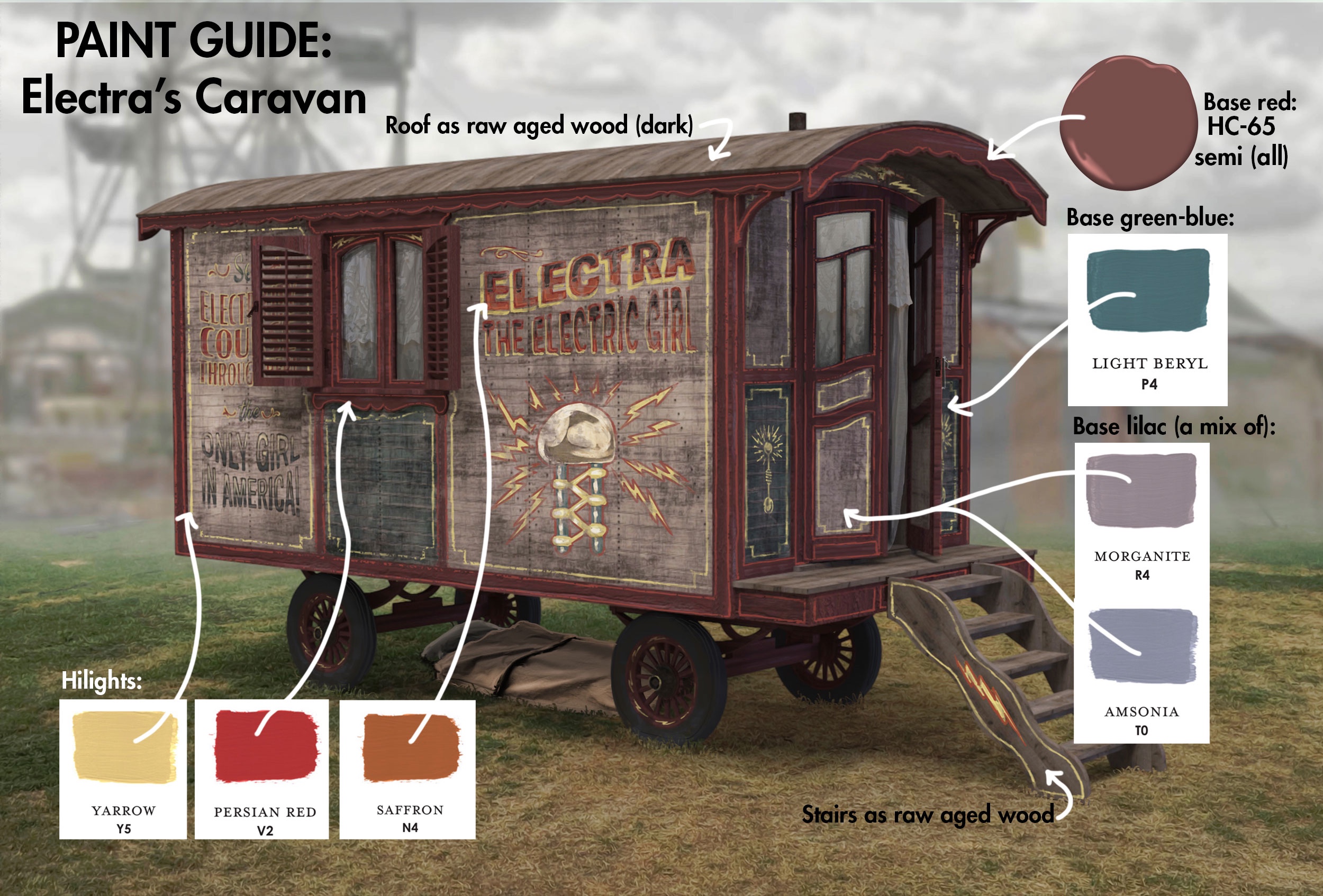
Production design sketches and notes for “Nightmare Alley”, courtesy of Tamara Deverell.
Kirill: Speaking of the new worlds, you’ve done a few episodic productions in the last several years. Did it catch you by surprise how quickly the industry has expanded into the premium streaming / episodic space, perhaps at the expense of mid-budget feature films?
Tamara: I’m not really surprised about that. The platforms are changing radically. I hope people will always want to see movies in theatres, but TV screens keep on getting bigger and better, and this pandemic certainly changed a lot of things. People want access to entertainment in their own homes, and now it’s become even more prevalent because people have been stuck at home.
It’s shifting, and the best thing for filmmakers is to shift with it, and not to fight it. Cinema and television have become so closely entwined, both can provide high quality visual experiences. When I work in television, I try to imbue it with the same level of detail as I would on a feature film where you see it in that large-scale format, because a lot of people are watching that largescale television. I worked on “Star Trek Discovery”, an episodic television production, and it was the same level of detail, and desire to create new worlds and present audience with fantastic sets as I would in a feature film. It’s not a huge difference for me anymore.
When I first started in the industry, there was this clear line between the two. You do TV, and you can get away with things. You do a movie, and you pay attention to every minute detail. Not anymore.
Kirill: Would you say that a movie like “Nightmare Alley” needs to be seen on a big screen?
Tamara: I would. It was such a particularly intense experience, such a heavily art directed movie, and the visuals are so important. That goes for all of Guillermo’s films, they have this intrinsic visual value that is worthy of a large screen. There is so much detail in aging, textures and tones, and I want people to be able to look at that on a big screen.
Kirill: And then on the other end of the screens spectrum, you have some people that watch these stories on their phones, perhaps not even in one go.
Tamara: If I see somebody watching “Nightmare Alley” on that tiny, badly calibrated airplane screen, I know that they didn’t really see it. I would be disappointed for them, as it’s such a fundamental difference. When I’m doing a project, I’m still paying the same amount of mind and attention to it, there is no difference between TV and big screen films in the level of strong visuals that I wish to create.
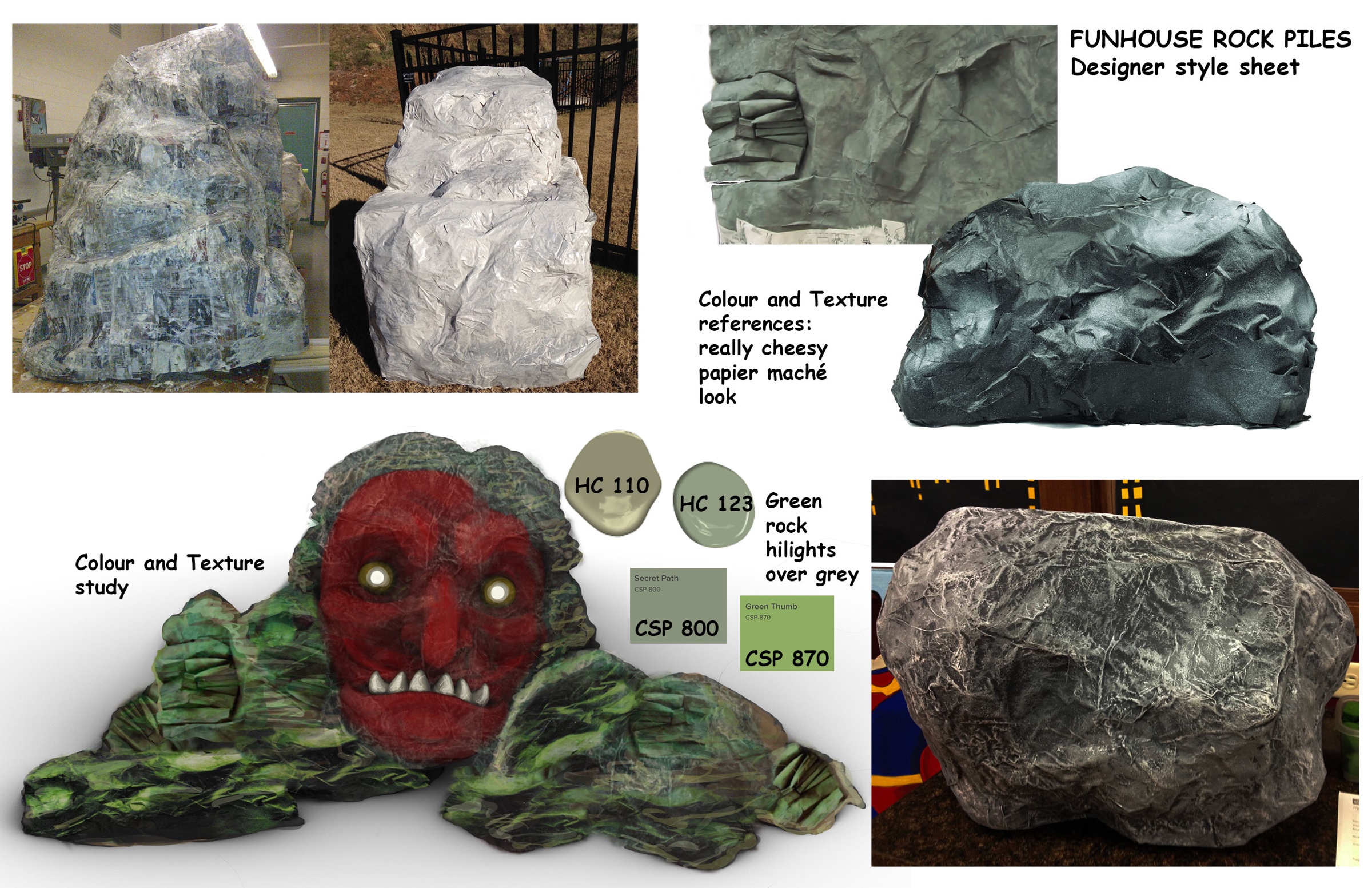
Production design sketches and notes for “Nightmare Alley”, courtesy of Tamara Deverell.
Continue reading »
Continuing the ongoing series of interviews with creative artists working on various aspects of movie and TV productions, it is my pleasure to welcome Ricardo Diaz. In this interview he talks about the art and craft of cinematography, the transition of the industry from film to digital, the variety of screens on our lives, and the impact of the ongoing pandemic on his industry. Around these topics and more, Ricardo dives deep into his work on the recently released “Texas Chainsaw Massacre”.
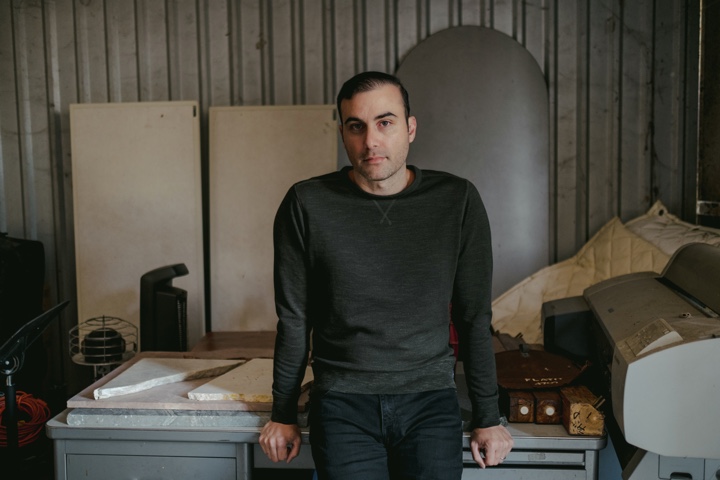
Kirill: Please tell us about yourself and the path that took you to where you are today.
Ricardo: I’m Ricardo Diaz, originally from a small town in South Texas, and I’m a cinematographer based out of Los Angeles. I am where I am today because I love movies. I grew up in a part of the world where there wasn’t a whole lot of things to do with your spare time, and my family really loves the cinema. So growing up, I watched a lot of movies with them. We went to the movie theater all the time, and it was one of the many bonding moments that we had, watching a movie and then talking about it.
At some point my passion for it made me realize that this is something that could be turned into a living. I happened to be growing up at a time when analog was already shifting to digital in the consumer market. You could access software that allowed you start cutting digital footage and just experiment. It became accessible to me when I was young, thanks to the internet, Apple computers, and MiniDV cameras.
The movie that made me want to make movies was “Superman” by Richard Donner. At one point I went back and watched it again, and I remember seeing that it was dedicated to Geoffrey Unsworth. I didn’t know who he was and what he did, but thanks to the internet I looked him up, and he turned out to be the director of photography on the movie. Then I went down the rabbit hole of the internet as to what that position was, and it really was in sync with all the things I loved about making these videos with my friends and family.
It was crafting the illusion, crafting the magic of cinema. It’s this blend of craft and artistry. It’s painting with light. And at that point I knew that I wanted to be a cinematographer. That is the path that I wanted to take, and I’ve pursued that relentlessly for the last 20 years. That is how and why I am here today, with a lot of support from my family who really encouraged me to pursue this.
Kirill: Do you feel that the transition from film to digital is complete, and perhaps there is no longer a debate on relative merits? Has the industry accepted, so to speak, that digital is the default choice?
Ricardo: I am of the opinion that it is a tool, and that they are both just matters of taste. And neither of them is right or wrong at this point.
Digital has caught up. It’s indisputable that you can make a digital image just as atmospheric, beautiful, and magical as film. Steve Yedlin has certainly proved time and time again that you can absolutely trick the eye using digital tools and digital capture to make it look almost imperceptibly different from film. So it’s really a matter of creative taste and vision, and there isn’t a right or wrong answer at this point. If you’re Christopher Nolan and you want to shoot film, shoot film. If you’re Sean Baker and you want to shoot 16mm and that’s right for your project, shoot Super 16. And if you want to make “The Avengers” and shoot on digital capture, do that.
There is no wrong answer. Every project is different, and it calls for something specific and unique for the creators. That’s where we’re at.
I almost feel like the transition to digital is so complete that many artists are trying to sneak some film back into the world just because they miss it. It’s this full circle situation where the past decade has seen digital become so dominant, and some people want to come back to film and try it again. That’s how you know the cycle is complete.
Kirill: Is this debate strictly confined to tighter circles within the industry? Is that something that the larger audience does not spend too much time thinking about?
Ricardo: It probably depends on the age range of the audience you’re speaking to. If you take somebody in their late teens or early twenties, and you ask them if it matters that “Texas Chainsaw Massacre” is shot on 16mm the way the original was, you’ll hear that it doesn’t really matter to them.
The debate has raged on within tighter circles, but it’s quieting down a bit over the last few years. There are still a few famous and very vocal proponents carrying the flag, and I’m glad they are. I never want film to die. It’s another tool in the toolkit. It’s another canvas to paint on. We need to have different tools and different canvasses available to us, and it would be awful to lose that. But at this point, especially for younger audiences, most viewers don’t care about the medium itself. Of course you still have cinephiles of a certain age that are purists, and it has to be on film, and it has to be flickering 24 times a second. That is what the cinema is for them, and it still matters for them.
But in general, audiences want to be taken on an emotional ride. They want to escape for a few a bit, or be engaged for a bit, and the canvas just needs to be right for that story to them.
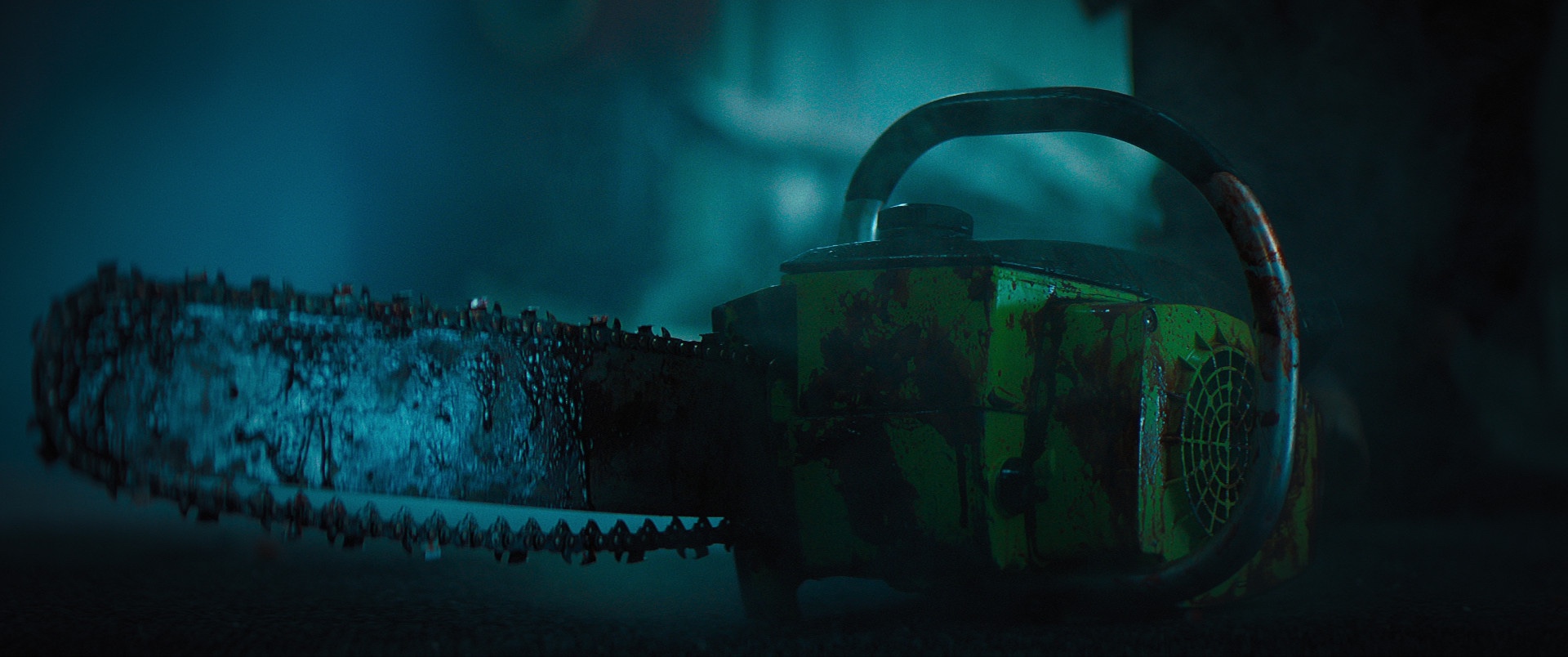
“Texas Chainsaw Massacre” 2021, copyright Legendary, courtesy Netflix.
Kirill: Speaking of the canvas, I was watching the movie yesterday on my laptop instead of going downstairs and watching it on the bigger TV screen. Do you think that as an audience member I am missing something when I do see it on this smaller screen?
Ricardo: I think you are missing some things when you watch these films, especially those released in 2.39:1 aspect ratio. We, the filmmakers, put so much love and care into the details that make an image feel believable, or gruesome, or beautiful – whatever aim we are going for. There’s a lot of detail in that and it’s a sum of its parts. The smaller you are watching that image, the harder it becomes to see and feel like you’re getting those details.
Now I won’t specify what size at which you lose the ability to really see the details, but there definitely is an argument to be made about seeing it on as big a screen as possible in order to lose yourself in that illusion. I definitely hope that they don’t let you play Netflix movies on your Apple Watch at some point, because that would be disappointing.
I would always encourage you to see it on the biggest canvas as possible. And if for you that was your laptop, then great. I’m glad it was your laptop and not your phone. And if it was your phone, I hope it was an iPhone 13 Pro Max and not an iPhone Mini. It’s really about encouraging you to watch it on as big a screen as possible!
Continue reading »
![]() Kirill: Please tell us about yourself and the path that took you to where you are today.
Kirill: Please tell us about yourself and the path that took you to where you are today.